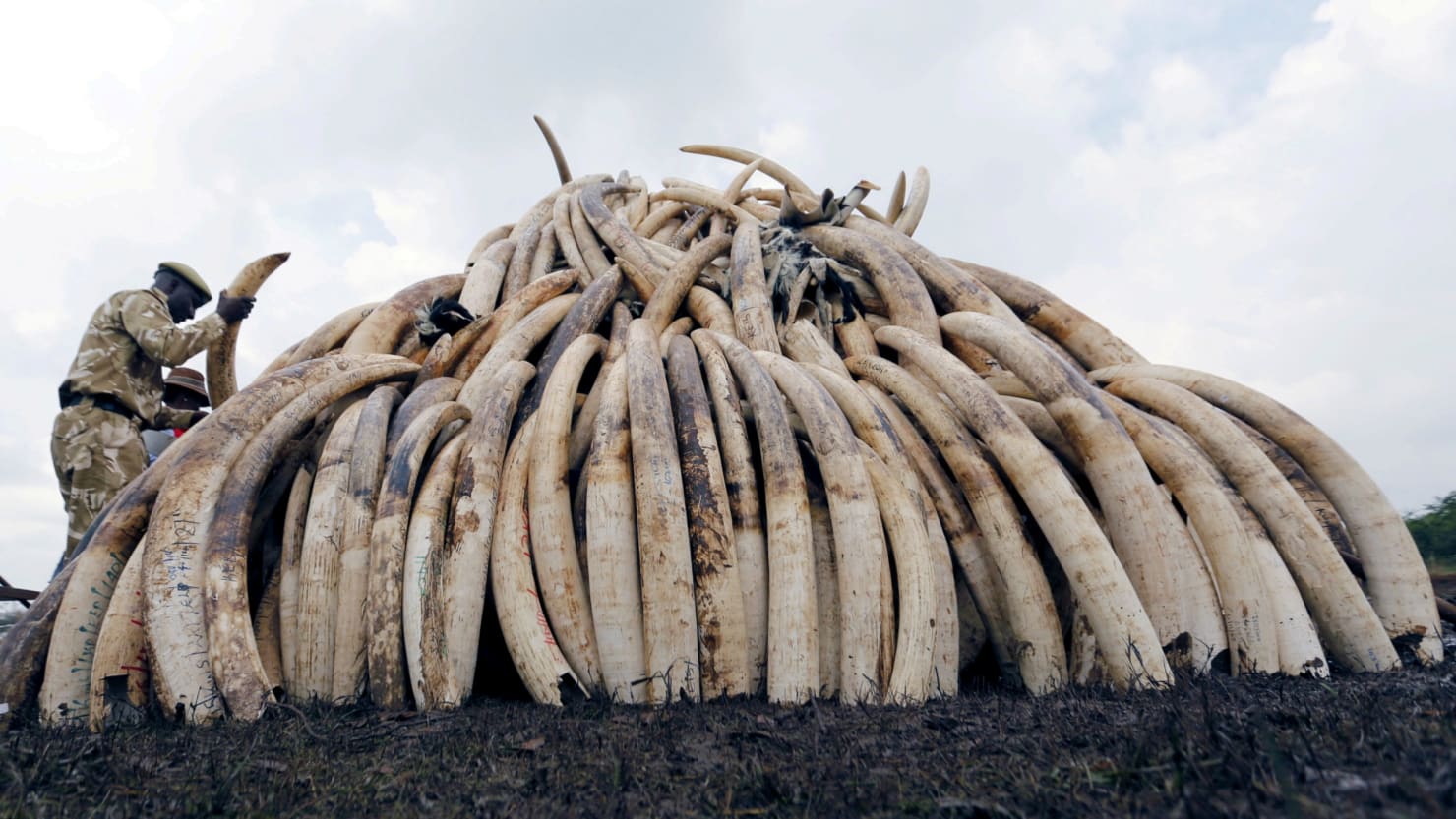Top ivory investigator murdered in Kenya
Esmond Bradley Martin, whose groundbreaking investigations helped the fight against elephant poaching, died after being stabbed at home in Nairobi
Mon 5 Feb 2018




A well-known American ivory-trade investigator, who pioneered efforts to combat elephant and rhino poaching, has been killed in his home in Nairobi, prompting an outpouring of shock and revulsion across the conservation world.
Esmond Bradley Martin, 75, died after being stabbed in his house in the Nairobi suburb of Langata on Sunday. His wife, Chryssee Martin, found his body. Bradley Martin had led global investigations into illegal wildlife trading since the 1970s and was a charismatic and familiar sight at conservation conferences.
Initial reports suggest that police believe the attack was part of a botched burglary. But there are also concerns that the murder may have been related to Bradley Martin’s work.
Elephant and rhino numbers have plummeted catastrophically on the African continent in the last 50 years as a result of the illegal trade in ivory and rhino horn by Chinese smugglers.
In east Africa, elephant numbers have almost halved, while in some countries – Tanzania, for example – the fall has been as high as 60% over five years. China's demand for rhinoceros horn has seen rhinos similarly affected, with a 9,000% rise in poaching in South Africa from 2007 to 2014. But ivory and rhino horn are hugely profitable and are an important revenue source for traffickers, although the banning of ivory sales in China last year is believed to have brought ivory pricesdown.
Bradley Martin, a geographer by training, played a crucial part in bringing this international black market to global attention. He began documenting the illegal trade in wildlife in the 1970s, looking in detail at the movement of elephant ivory and rhino horn among other substances.
“No one was doing this at that point,” Dan Stiles, who worked with Bradley Martin for many years, told the Guardian. Bradley Martin and Stiles went on, with Lucy Vigne, to record data about the movements of ivory and rhino horn that “provided data and numbers for what had, up until then, been anecdotal. Once you had the data you could then monitor the trade. He really woke up the world to what was going on.”
A number of campaigners against elephant and rhino poaching have been murdered in the last few years, and though most occur out in the parks, in conflicts with armed poachers, last year the campaigner Wayne Lotter was shot at point-blank range in Tanzania while in a taxi.
There appears to have been little progress in the investigation of Lotter’s murder, but a source close to the investigation said that three people were charged last year in connection with the killing.
Latest figures show that 197 people were killed around the world last year defending land, wildlife or natural resources – almost four a week.
“Esmond was one of conservation’s great unsung heroes,” said Save the Elephants’ founder, Iain Douglas-Hamilton, who, along with Bradley Martin and Stiles documented the catastrophic fall in elephant numbers and brought the issue to the world stage.
“His meticulous work into ivory and rhino horn markets was conducted often in some of the world’s most remote and dangerous places and against intensely busy schedules that would have exhausted a man half his age … He was my friend for 45 years and his loss is a terrible blow both personally and professionally.”
“He was a giant of a man in his field – quite literally, his tall, gangling figure and shock of white hair made him an unlikely undercover investigator,” said Greg Neale, ex-environment correspondent at the Telegraph. “But that was part of his role as he sought to understand the extent of the rhino horn (and ivory) trade, often putting himself at real risk in some of the world’s most lawless places to establish the economic and cultural background to the forces driving the rhino and elephant towards extinction.”
Kaddu Sebunya, president of the African Wildlife Foundation, said: “He was a passionate individual who contributed tremendously not only to the conservation community, but governments all over the world in his devotion in highlighting ivory and rhino horn smuggling.”
“He was tireless in his efforts to protect elephants and rhinos,” said John Scanlon, head of the Convention on International Trade in Endangered Species of Wild Fauna and Flora (Cites). “His research and findings across multiple continents had a real impact.
“He was a longstanding and highly regarded member of the Cites technical teams looking into the poaching of elephants and smuggling of their ivory. He will be sadly missed by all at Cites but his legacy will live on.”

No comments:
Post a Comment
Comments always welcome!